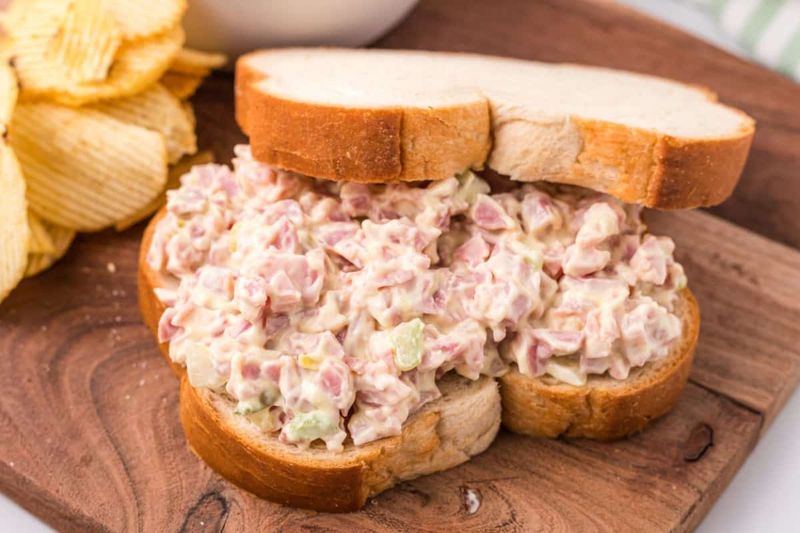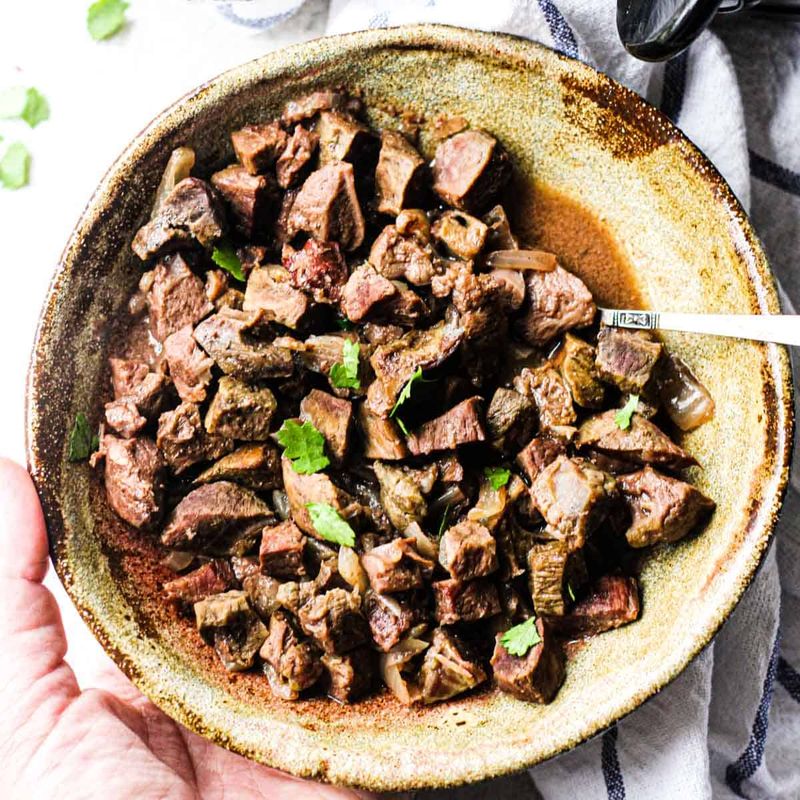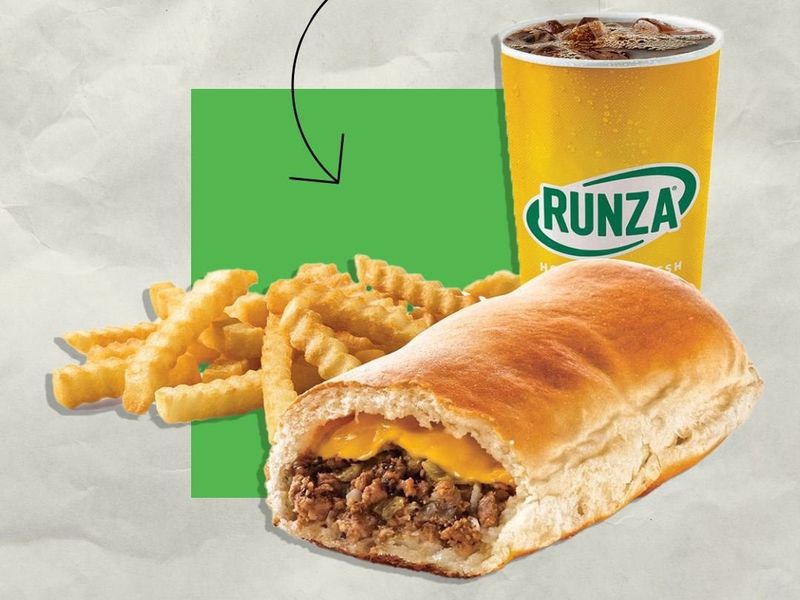The Midwest is renowned for its hearty, comforting meals that have traditionally brought families together. Over the years, however, some of these iconic dishes have disappeared due to changes in lifestyle, health trends, and food preferences.
This blog explores 15 such comfort foods, delving into the reasons behind their decline and the cultural shifts that contributed to their disappearance.
1. Ham Salad Sandwiches
Ham salad sandwiches, once a staple at Midwest deli counters, have largely disappeared from the American culinary landscape. Made from ground ham, mayonnaise, pickles, and sometimes hard-boiled eggs, this spread was cherished for its simplicity and taste. However, as awareness around processed meats grew, many consumers began to seek healthier options.
The decline of ham salad sandwiches can also be attributed to evolving palates that prefer fresh, less processed ingredients. While it evokes nostalgia for many, the demand has shifted towards more contemporary sandwich fillings, leaving ham salad in the past.
2. Liver and Onions
Liver and onions was once a beloved meal in many Midwest households, celebrated for its hearty and rich flavors. This dish, rich in iron and nutrients, was a regular feature on dinner tables. Yet, over time, it has seen a sharp decline in popularity.
Changing taste preferences and a growing aversion to organ meats have played significant roles in its disappearance. Additionally, the rise of modern dietary trends that emphasize leaner cuts of meat have overshadowed liver’s nutritional benefits. Today, liver and onions is often remembered fondly rather than savored regularly.
3. Jell-O Salads
Jell-O salads were once a colorful and creative fixture at Midwest potlucks and family gatherings. These gelatin-based dishes, often including fruits, vegetables, or even cottage cheese, were as much about visual appeal as taste. Despite their popularity in the mid-20th century, they have fallen out of favor.
As contemporary palates leaned towards fresh and less processed foods, gelatin-based dishes lost their allure. The shift away from Jell-O salads also reflects broader trends in food aesthetics, as more natural presentations became preferred over processed vibrancy.
4. Chicken Ala King
Chicken Ala King, a creamy dish of chicken cooked with peppers and mushrooms and served over toast or rice, was once a cherished dinner table favorite. Its rich flavor profile made it a go-to comfort food in many Midwest homes. Yet, it has largely disappeared in modern times.
The shift towards trendier and more health-conscious chicken recipes has overshadowed this classic. As more people gravitate towards lighter, globally inspired dishes, Chicken Ala King’s heavy cream sauce has become less appealing to contemporary tastes.
5. Tuna Noodle Casserole
Tuna noodle casserole, once a staple in many Midwest households, was loved for its simplicity and cost-effectiveness. Combining tuna, noodles, and cream of mushroom soup, it was topped with crushed chips or breadcrumbs for added texture. This dish was an easy weeknight solution for busy families.
However, as trends shifted towards fresh ingredients and low-sodium meals, tuna noodle casserole lost its popularity. Modern families often prefer fresher, more diverse meal options, leaving this once-popular casserole as a nostalgic memory rather than a menu regular.
6. Beef Heart Stew
Beef heart stew, a classic example of nose-to-tail cooking, was once a budget-friendly comfort food in the Midwest. This hearty stew made use of beef heart, combining it with vegetables like carrots and potatoes for a nourishing meal.
However, as dietary trends shifted and the consumption of organ meats declined, beef heart stew became less common. Many home cooks today opt for more mainstream cuts of meat, leaving this traditional dish to fade from memory except among the most devoted culinary historians.
7. Corn Pudding
Corn pudding, a creamy and slightly sweet side dish, was a cherished part of family gatherings in the Midwest. Its rich texture and comforting flavor made it a beloved accompaniment to many meals.
However, over time, corn pudding has been replaced by more modern or healthier corn-based dishes. As culinary trends move towards lighter, more nutrient-dense options, the indulgent nature of corn pudding has caused it to lose favor. Despite its decline, it remains a nostalgic favorite for those who remember it fondly from family feasts of the past.
8. Mock Chicken Legs
Mock chicken legs, also known as city chicken, were once a quirky but beloved dish in the Midwest. Made from pork or veal shaped onto skewers and breaded to resemble drumsticks, they were a creative response to meat shortages.
As meat costs and preferences shifted, mock chicken legs fell out of everyday rotation. Consumers began to favor more authentic chicken dishes, making this unique culinary invention a rarity. While it is rarely seen on modern menus, mock chicken legs hold a special place in the hearts of those who grew up with this inventive dish.
9. Runza Sandwiches (Outside Nebraska)
Runza sandwiches, a beloved stuffed bread pocket filled with beef, cabbage, and onions, have become regionally exclusive over time. While they remain popular in Nebraska, their presence outside the state has dwindled.
As culinary tastes evolved and newer sandwich options emerged, Runzas became less common in other Midwest regions. The focus on local, artisanal, and diverse flavors has overshadowed this traditional offering. Despite their decline outside Nebraska, Runzas continue to be a cherished regional specialty, offering a taste of nostalgia for those who remember them fondly.
10. Pickled Bologna
Pickled bologna, once a common snack found in Midwest gas stations and corner stores, has all but vanished in recent years. This tangy, preserved meat was a go-to snack for many on-the-go individuals. However, as preferences shifted away from pickled and preserved meats, its popularity waned.
The growth of health-conscious movements and the availability of fresher snack alternatives have further contributed to its decline. Today, pickled bologna is more of a culinary curiosity than a common treat, reflecting broader changes in how people snack and consume preserved foods.
11. Swedish Meatballs (Homemade Style)
Homemade Swedish meatballs were once a staple at church suppers and festive gatherings in the Midwest. These savory morsels, served with a creamy sauce and lingonberry jam, were a comforting treat. As time passed, homemade versions took a backseat to more convenient options.
The convenience of frozen or store-bought versions, like those popularized by IKEA, contributed to their decline. While they are not entirely gone, the art of making Swedish meatballs from scratch is less common, with many opting for quicker alternatives that fit busy lifestyles.
12. Hot Dish (Classic Variants)
The classic Minnesota hot dish, typically made with ground beef, canned soup, and topped with tater tots, was a beloved staple in Midwest households. This hearty dish was a potluck favorite, offering comfort and convenience.
However, many of its original variants have been replaced by modernized or healthier takes. As families seek more nutritious and diverse meal options, the traditional hot dish has evolved. While it still holds a place in regional cuisine, the classic versions are often updated with fresher ingredients, reflecting broader trends in eating habits.
13. Oyster Stew
Oyster stew, a simple cream-based soup made with canned oysters, was once a staple during the holiday season in many Midwest homes. Its rich and creamy texture made it a festive and comforting dish. However, as fresh seafood became more accessible, the popularity of oyster stew declined.
The shift towards fresh ingredients led many to explore other seafood options, leaving canned oyster-based dishes in the past. Despite its decline, oyster stew is fondly remembered by those who grew up with it as part of their holiday traditions.
14. Salmon Patties
Salmon patties, made from canned salmon, crushed crackers, and eggs, were once a budget-friendly weeknight staple in many Midwest homes. These patties offered an economical way to incorporate seafood into meals. However, they have been overshadowed by the rise of fresh salmon dishes.
As consumers became more health-conscious and preferences shifted towards fresh ingredients, the appeal of canned salmon diminished. While salmon patties are less common today, they still hold a nostalgic place in the hearts of those who enjoyed them during simpler times.
15. Rhubarb Everything
Rhubarb, once a garden staple and the star of many Midwest dishes, has seen a decline in popularity over the years. From pies to jams and cakes, rhubarb was cherished for its unique tart flavor. However, as fewer people grow it at home and it becomes harder to find fresh, rhubarb dishes have declined.
The shift towards more widely available and versatile fruits has overshadowed rhubarb’s role in culinary creations. Despite this, it remains a cherished ingredient for those who remember its tangy contribution to homemade delights.















